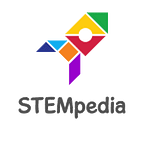Coding can very easily stress upon your child’s ambition and capability to mix their idea of logic with their intuition. Kids instantly see it as a tool for testing their creative stream of “what happens if I do this?” questions and ideas. It makes them think and question at a very young age, which proves to be extremely beneficial for the time they go out in the big bad world and have to put their theories to test.
Why is Coding important?
Every time your child is learning to code with their computer, robot, tablet or other screens, they are not just fiddling with idle screen time. It’s an ongoing engagement and a cultivating activity that, in the process, teaches them important life skills.
It doesn’t matter here if your child wants to be a doctor, drive big trucks, be a chef or create art, there isn’t even the shadow of a doubt that they will be working with one or more of the STEM disciplines: science, technology, engineering or math. They don’t need to be high-end experts at STEM — just learning the basics of coding can hand them a much better understanding of the technologies they’ll be working with at all times as well as the tools they need to help improve processes and workloads in their field.
Free Programming Languages for Kids to Learn How to Code
Keeping in mind the importance of coding and programming, today we are going to tell you about some of the best resources out there for your child’s coding career.
Scratch
Scratch is a free kids programming language developed by MIT’s Lifelong Kindergarten Lab. This free language is supplemented with getting-started tutorials, curriculum instructions for parents, and a booming user community. Not only this, but there are also cards that kids can use to learn Scratch programming concepts even when they are away from their computer.
Scratch uses a building-block visual interface to create a constructed experience for kids and parents. It lets you stack up on programming factors, such as actions, events, and operators.
Each block has a shape that only allows it to be combined with a compatible object. For example, repeat loops, are shaped like the letter C to let you know that you need to put blocks in between the start and stop of a loop.
Using Scratch will give a head start to your child’s creative and cognitive abilities. It can be used to invent real animations and games using either any of the images available on the app and characters or by uploading new ones. Scratch can also be used without an Internet connection. Kids have the option to share their creations on Scratch’s online community. There is no obligation to share everything they do online.
The reason Scratch is the first one on this list is that it is free and well supported. It’s one of the first kid-friendly programming languages, and it’s easy to see the influence of Scratch in many other kid-friendly programming languages also listed here, such as Blockly.
Alice
Alice is another free 3D programming tool devised especially to teach kids the concepts of object-oriented programming languages like C++. It uses the familiar approach of building blocks to allow children to create games or animations by programming camera motions, 3D models, and scenes.
The drag-and-drop interface from Alice is easy to use and the accessible play button might be a little less confusing for some students than Scratch’s cluttered interface. Programs, or “Methods” in Alice, can be converted into a Java IDE such as NetBeans so that programming students can make the transition from a visual building block interface to a standard programming language.
Alice was developed by Carnegie-Melon University. The website is being modified accordingly day-by-day, and the program is in the late stages of development and research.
Blocky Games
Blockly Games is a free to use Google project that includes a series of seven games designed to teach programming to kids. Games include puzzles, which is an introduction to Blockly, Bird. These teach conditionals, and Turtle, which will then introduce the player to loops.
By the looks of it, coding skills are going to be more than important for the future job market. However, there are other things that your kid takes away by learning how to code. For example, the longing to create something from the bone and keep on building it. This doesn’t just develop your kids’ minds intellectually, but also psychologically.
In A Nutshell
Coding is a tool of pragmatism and it has shown a tremendous amount of growth in children’s interest and growth. With just a web browser and a computer, your kids can start on their journey of programming the fun and easy way. The best way to get them started is by signing them up with an online coding game!
Psst. A little something before you leave!
Thank you for taking out the time to read this blog! If you enjoyed reading it and would like to read more about parenting in the modern world, go check out these blogs as well!
Originally published at thestempedia.com.
